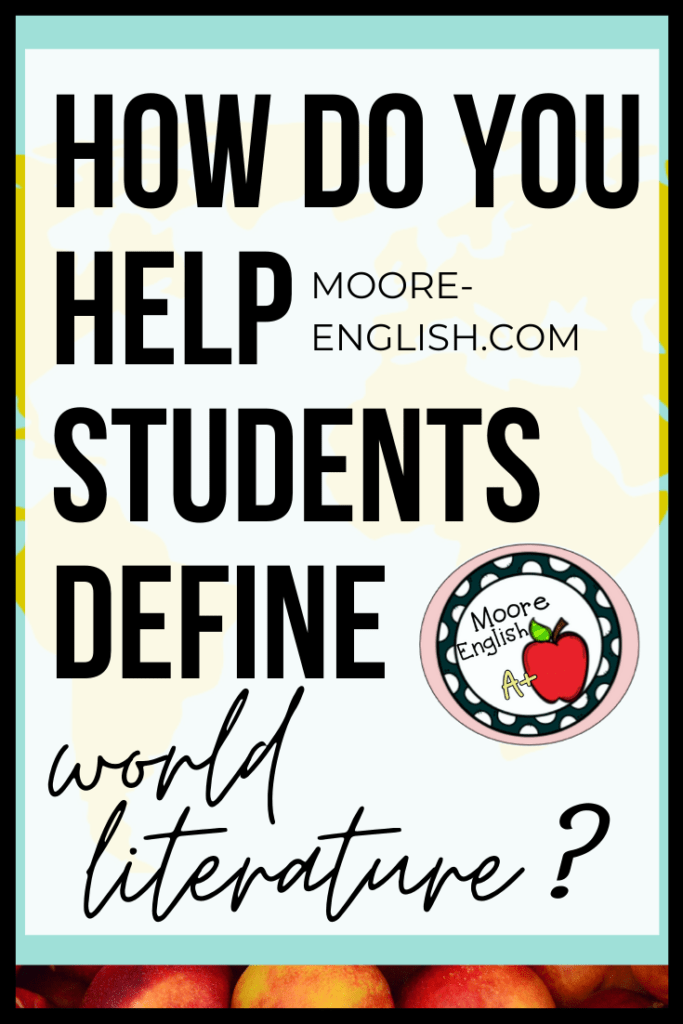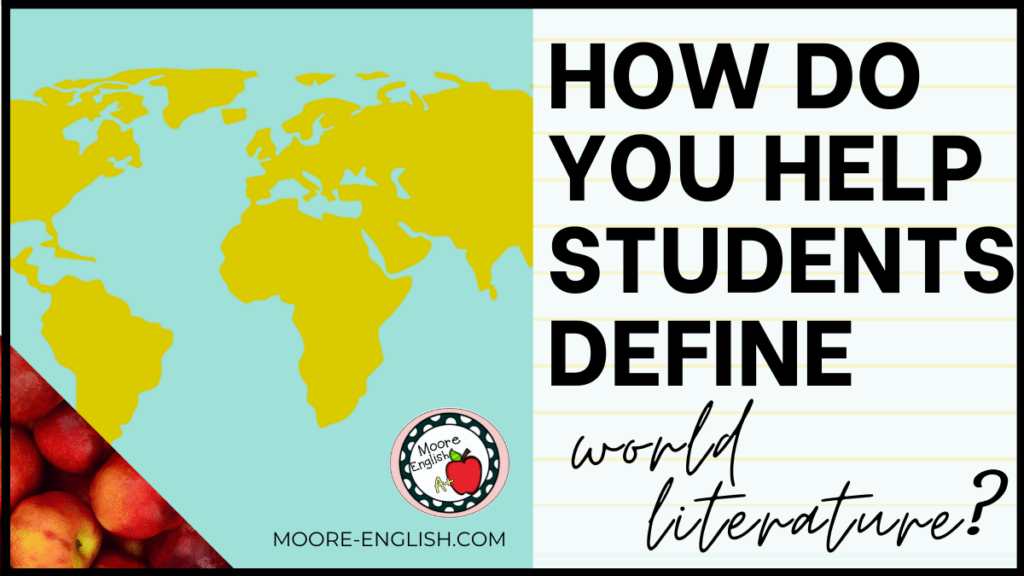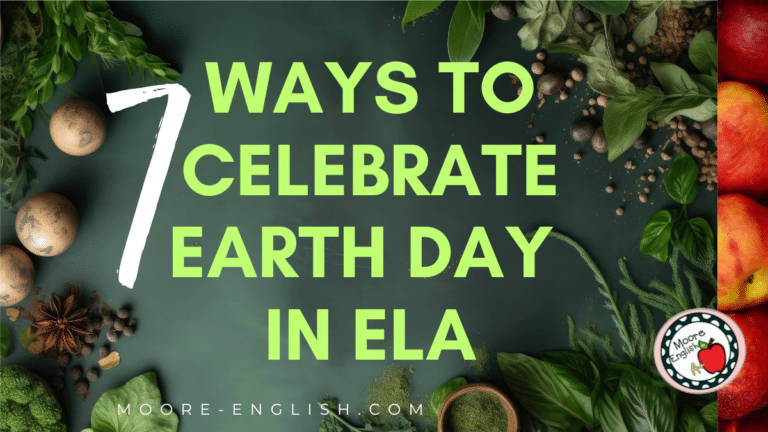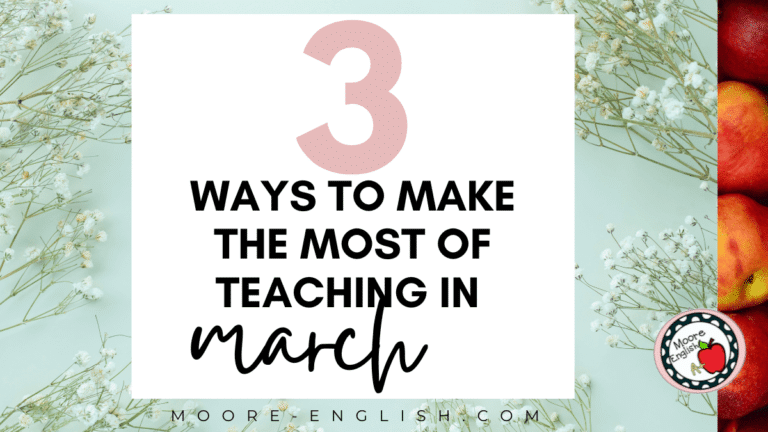Last year I had to opportunity the to teach World Literature for the first time. In many schools, sophomore English/English 10/English II is titled “world literature.” But in my school, English 10 is just…sophomore English. We focus on real nuts-n-bolts reading and writing skills and strategies. Juniors focus on American literature. And seniors focus on British literature. We also have a handful of one-term elective ELA courses, including World Literature.
For my school, World Literature is a fairly new course. So the curriculum was half-formed when I inherited the course. The previous teacher had selected Dante’s Inferno, The Joy Luck Club, The Metamorphosis, and Night. Excepting The Joy Luck Club, this collection lacked a truly worldly perspective, and excepting Night, these were all extremely challenging texts.
Here’s what I decided to do: choose texts with greater diversity. For me, diversity meant texts that provided alternative perspectives on the world and texts that better lent themselves to differentiation for readers at all levels.
This post this post may contain affiliate links. Please read the Terms of Use.
Insights from Teaching World Literature
From that experience, I came away with a few major insights into how to select World Literature.
“World Literature” is ill defined. So often we call our English 10 classes World Literature but then only read The Odyssey, “The Scarlet Ibis”, and Romeo and Juliet. Knowing that I wanted something more apt, I kept looking for a better definition…and found nothing. The definitions I found were either too simple for high-school seniors or too complex. For this reason, I did some research and wrote my own definition. You can find it for free here.
Choosing informational texts for this class was easy because current events clearly demonstrate the need for reading more World Literature. More often than not, I asked my students to find an article related to one of our texts. This gave them an opportunity to practice some voice and choice while using their research skills.
World Lit Texts
Choosing literary texts proved more difficult, in part because “world literature” is ill defined and in part because so many teachers associated World Literature with The Odyssey, etc. As I was choosing literary texts, I ended up considering:
- any text with a non-Western setting
- texts written by non-Western writers
- texts that presented students with a new perspective
Mythology is a great place to start. But it’s not an ending place. We began the class with this activity from Khan Academy (not sponsored). And it proved to be a good way to expose students to different belief systems while also emphasizing commonality. I also used this lesson to review figurative language and literary devices.
Speaking of…figurative language and literary devices exist in all literature. And beginning with figurative language and literary devices was often a good starting place for my students. Sometimes they didn’t know how to approach a character or text that was far outside their worldview. But beginning in the familiar land of figurative language and literary devices helped.
Here’s the texts I ended up using in class. Follow the link to make a copy for your Google Drive. Here are some other text and resource suggestions for your world lit class:
- “Girl” by Jamaica Kincaid
- Corners of Culture Graphic Notes
- “Making a Fist” by Naomi Shihab Nye
- “We Lived Happily During the War” by Ilya Kaminsky
- “The Danger of a Single Story” by Chimamanda Ngozi Adichie
- “Tula [‘Books are door shaped’]” from The Lightning Dreamer by Margarita Engle
What other titles should I add to my list? How do you help students define difficult terms like “world literature” and “culture”? Let us know in the comments below.










